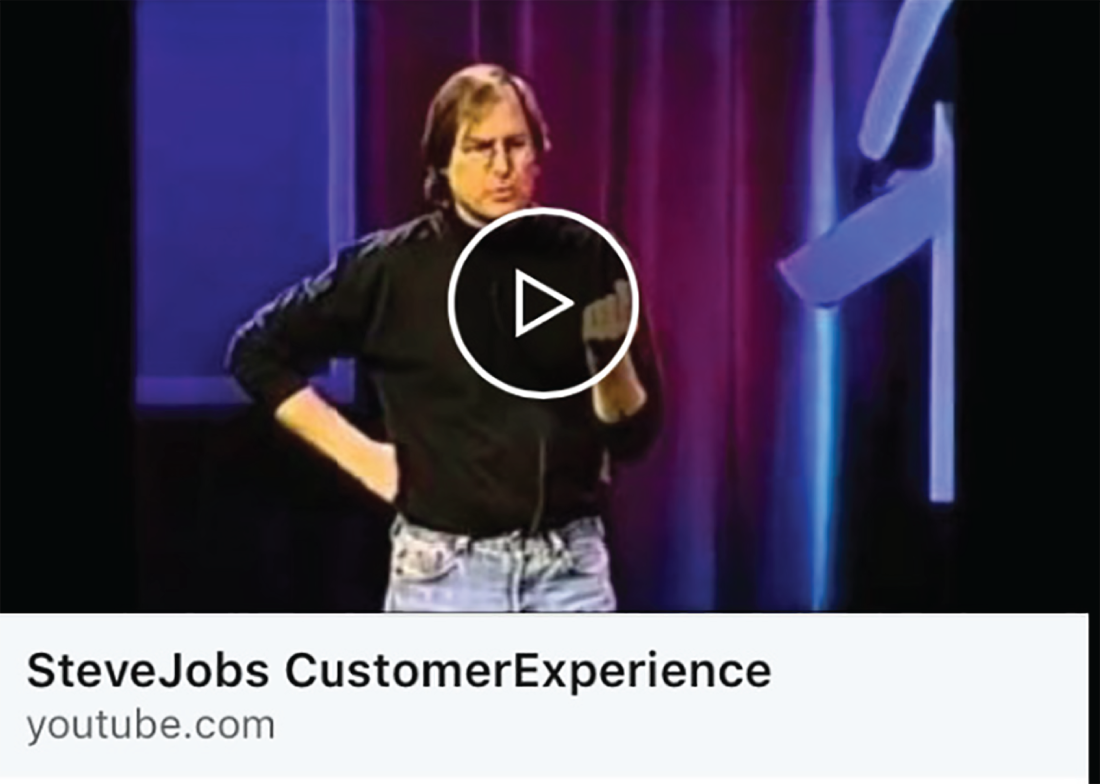INTRODUCTION
THE CUSTOMER ECONOMY
How do you define a successful business? Most business leaders would agree that sustainable, profitable growth has to be one of the most desirable achievements and characteristics of any commercial enterprise. In principle, that sounds simple, doesn't it?
Well, yes – but sustainable business growth is not a one-time effort, and does not happen by accident. It happens because the company creates market demand from customers and prospects and, most importantly, continues – time and time again – to satisfy the needs of its customers. Happy customers not only buy more, they also recommend the company. As a result, customers help accelerate growth. And all of this only really happens when the organisation truly puts the customer at the heart of everything it does.
The trouble is, even though most organisations talk a great game when it comes to putting the customer at the heart of their business, they frequently struggle to deliver on that promise. In this book, we will give CEOs, leaders and the whole the organisation the ‘How to’ with our 10-part C-change growth engine to help them accelerate business growth in the Customer Economy. A toolkit and collection of actions that companies can deploy, according to their own circumstances, is provided to help you achieve this.
Conversely, achieving sustainable profitable growth does not happen when the company pushes products or services at customers that, ultimately, deliver a poor Customer Experience (CX). We all have examples where we buy something, either online or in a shop, and it just fails to live up to expectations. We are less likely to buy that brand (or product) again, and we are unlikely to recommend it. In fact, we might go out of your way to unrecommend it because the experience was so poor.
Ironically, many organisations today like to talk about their commitment to corporate social responsibility. They do a great job recycling paper in the office, supporting local charities, maybe encouraging employees to volunteer for worthy causes, etc. All good, positive stuff and long may it continue. But since when did providing poor CX seem like a responsible or ethical business model? It appears the core purpose of business – to satisfy customer needs – somehow got lost in the myriad of other priorities.
So, why do companies talk a good game but struggle to deliver on it? Most companies are structured around functional and operational units, such as finance, sales, product and service. Moreover, the bigger the company gets, the deeper the divides between these siloes. As the gaps increase, it becomes harder to ensure that the business provides the best CX, and to ensure successful customer outcomes.
Employees love their siloes – these siloes give them a profession, a work, identity and even a meaning – for example, ‘I'm in sales’, ‘I work in HR’, ‘I'm in Trade Finance’, ‘I cover the Benelux region’, etc. People spend years building their careers, and underpinning them with academic and vocational qualifications, training and certifications that establish their credentials and experience. In short, it is an easier and more comfortable option for employees to fall back into their siloes.
But siloes are used by farmers to store grain, and are not great for organisations seeking to drive sustainable customer-led growth. In this book, we will show how we can break down organisational siloes and build customer-led organisations (see Figure I.1).

FIGURE I.1 Siloes are the enemy of customer-centric growth.
Source: Jeanne Bliss. Reproduced with permission
In previous decades, we lived in the product economy. This era was characterised by scant customer choice and customers who were generally more accepting and trusting of company product pitches. In effect, companies were all powerful and could almost pay mere lip service to their customers – at least for the short term.
In 1960, in his seminal paper titled ‘Marketing Myopia’, Theodore Levitt addressed this phenomenon and brilliantly exposed the fundamental imperative for organisations to become customer-led:
The entire corporation must be viewed as a customer-creating and customer-satisfying organism. Management must not think of itself as producing products but providing customer-creating value satisfactions. It must push this idea (and everything it means and requires) into every nook and cranny of the organization. It has to do this continually and with this kind of flair that excites and stimulates the people in it. Otherwise, the company will be a series of pigeon-holed parts with no consolidating purpose or sense of direction.
In 1974, Philip Kotler, the godfather of modern marketing, continued the same theme: ‘All said, marketing is not a short-term selling effort but a long-term investment effort. When marketing is done well, it occurs before the company makes any product or enters any market; and it continues long after the sale’.
On a similar line, Kotler defined marketing as ‘the science and art of exploring, creating and delivering value to satisfy the needs of a target market at a profit. Marketing identifies unfulfilled needs and desires. It defines, measures and quantifies the size of the identified market and the profit potential’.
In 1992, Don Peppers, a CX originator, commented: ‘At many companies, it's easy to point fingers at the service people, or the salespeople, or the account handlers. Customer Experience istheir job, it's not my job. But I think delivering a better Customer Experience should be considered everyone's job, and everyone needs to know something about what that means.' He argued that employees in product-centric companies are defined by their siloes, and those in customer-centric companies are defined by the CX they collectively provide (see Figure I.2).

FIGURE I.2 Share of customer versus market share.
Source: Don Peppers. Reproduced with permission.
Later in that decade, during an Apple all-hands employee meeting in the 1990s, Steve Jobs (see Figure I.3) was asked the following question by one of the company's software engineers: ‘I would like for example for you to express in clear terms how, say, Java in any of its any of its incarnations addresses the ideas embodied in OpenDoc'. The employee was effectively asking why a particular software development language (Java) was being favoured over another (OpenDoc) in the development of Apple products and services, and ultimately questioning the wisdom (and as most would agree, business genius) of Jobs.

FIGURE I.3 Steve Jobs on Customer Experience.
Source: https://www.youtube.com/watch?v=r2O5qKZlI50. Accessed 18th June 2019. Screenshot by Chris Adlard & Daniel Bausor.
Job's response was incredible in its empathy, clarity and customer-led insight:
One of the hardest things when you're trying to affect change is that people like this gentleman, are right – in some areas. I'm sure there are some things that OpenDoc does, probably even more than I'm not familiar with, that nothing else out there does. And I'm sure that you can make some demos, maybe a small commercial app, that demonstrates those things. The hardest thing is, how does that fit in to a cohesive larger vision that's gonna allow you to sell $8bn dollars, $10bn dollars of product a year? And one of the things I've always found is that you've gotta start with the Customer Experience and work backwards to the technology. You can't start with the technology and try to figure out where you're gonna try to sell it. And I've made this mistake probably more times than anyone else in this room. And I've got the scar tissue to prove it. And I know that it's the case. And as we have tried to come up with a strategy and a vision for Apple, it started with what incredible benefits can we give to the customer, where can we take the customer. Not starting with, let's sit down with the engineers and figure what awesome technology we have and how we're gonna market that. And I think that's the right path to take.
As we accept the reality of the Customer Economy, business leaders are now faced with two choices – either to ignore it and carry on regardless, or to embrace it and to think about the implications for their organisation in order to drive customer-led transformation and catalyse growth.
Successful companies of the future will not be organised by divisions and siloes but according to the journey the customer takes with them in the Customer Economy. Indeed, we are seeing this today with companies merging traditional business functions such as customer support and services into a single team such as ‘Customer Success’.
As authors of this book, our goal is to help you in your efforts to transform your business to make it as customer-centric as possible, in order to catalyse growth. We have both worked in customer-related fields over the last 20 years. Our paths came together when we both gave speeches on customer-led growth at a ‘Customer Centricity’ conference at the British Library in London in 2016. We connected immediately with our shared enthusiasm for all things customer-related, which is what gave us the idea to write this book. We would read many customer-related books which have provided a range of perspectives on the topic, often complementary, sometimes contradictory, yet always with valuable insight.
We feel that a strategic, cohesive approach to reengineering the entire organisation around the customer is required. We will share with you from our own experience at the coalface of advising organisations on how to be customer-led. Join our call to arms to lead the mission to create a successful, sustainable, customer-led organisation. It starts here with our 10-part C-change growth engine which leaders across your organisation – from the CEO to managers and all employees – can relate to and implement. Do not think that you will read this and then will be able to deliver a quick fix overnight. Changing ingrained processes and functionally siloed activities to become dynamically centred around the customer requires culture change and an evolutionary approach to transformation. It takes time – however, what we give you is the vision and practical steps to lead the charge!
Practising what we preach in The Customer Catalyst, everything that has gone into developing this book is customer-led: from its title to our 10-part C-change growth engine. We wish to help you create a customer-led organisation and ultimately drive growth. Even choosing our title was an evolving process, having been co-created with business leaders and our publisher. This book is genuinely different. We hear you say – ‘you would say that, wouldn't you?’ But we proudly shout out that this is not a book to buy, use once and put on the shelf. This book serves to help you at all times during your ongoing customer-led business transformation. All too often, business books are thought provoking, but are marked by waning enthusiasm and therefore lack longevity. To drive real business transformation, there must be an evangelistic movement which is marked by a continual commitment to drive change. To help you do that, each chapter of this book tells a story from a different organisation, told by the organisations themselves, and not written in the third person.
We have been roving customer newshounds reaching out across the world to search for the greatest – and most innovative – organisations that are pioneering sustainable customer-led approaches. You will hear directly from these business leaders in the book, and then you can see their personal Customer Catalyst video stories online at our website: www.theCustomerCatalyst.com. If we are going to build customer-led organisations, it is important to share best practices. So, that is what we are going to do! Read on and join us on The Customer Catalyst journey.
